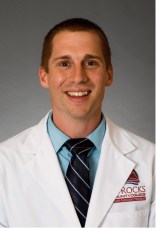What is pre-acclimatization? It is a process of adjusting to a new climate, usually higher elevation, reducing hypoxemia in high altitude settings in turn saving time, money, and most importantly, reducing altitude sickness. It can also allow for better sleep/comfort and physiological/cognitive performance at a high altitude. Acclimatization is a time-dependent process as over 5,000 genes are impacted by a large shift in elevation affecting ventilation, plasma volume, and hemoglobin mass, among other things. The whole process is not completely understood, but one key element is the hypoxic ventilatory response (HVR). HVR is activated by the aortic artery baroreceptors, as oxygen in the blood reduces it triggers an increase in respiration. This happens immediately as you ascend in altitude and maximizes at 7-14 days. Arterial oxygen increases by an increase in ventilation/saturation and also by dropping plasma volume, increasing hemoglobin concentration, and then later on, increasing overall Hgb production which in theory, overall decreases altitude sickness.
So how can you prepare yourself or pre-acclimatize?
Some of the better-known methods are spending time at higher altitudes prior to your destination, using a hyperbaric or normobaric chamber, blood doping, hypoxic exercise training, and a few pharmaceutical methods. All of these are options, but the key question is, which ones truly work?
Pre-acclimatization with actual altitude is the most useful. Generally speaking, you would pick your maximum sleeping altitude at your destination and slowly work your way towards that altitude. You pick an ascent profile which preferably would be spread over a week or more to be most useful. This pre-acclimatization should be completed no more than 1-2 weeks prior to your destination so that any pre-acclimatization gained doesn’t wane prior to your trip.
Simulated altitude is another option which includes hypoxic tents, hypoxic rooms/homes, hypoxic exercise chambers, and hypoxic masks. Out of these four, hypoxic tents or hypoxic rooms/homes, where exposure is over a long duration, are by far the most effective. Hypoxic masks and exercise chambers are not very effective as their short duration does not give the body enough time to make the proper adjustments and although might be beneficial in respiratory muscle training/performance, do little in the way of pre-acclimatizing your body. Studies show more benefit from hypobaric hypoxia training vs normobaric hypoxia training but keep in mind studies are very limited and warrant much further research. Overall, simulated altitude minimum requirements look to be somewhere in the range of 1 week of exposure, 7 hours per day, and a minimum effective altitude of 2200-2500 m and being no more than 1500-2000 m below your target sleeping altitude. Shorter term protocols can attenuate altitude sickness but not the incidence some studies suggest. As to why hypobaric methods are more effective than normobaric methods, no one really knows yet and more research is needed.
Changing your living destination to something at a much higher elevation and exposure over years or moderate altitude residence (MAR), is the most effective method according to some studies, but this is far from feasible for most. There are studies to show epigenetic changes for those who relocate to higher elevations for long periods and these appear to be much less than those who have genetically adapted to higher elevation over generations but still more effective than the previous mentioned short-term options.

Oxygen saturation is maximal at 11 days of exposure to a specific elevation. Diamox (acetazolamide) increases ventilation and can help with acclimatization but there isn’t much data on how using this pharmaceutical compares to other methods mentioned. World-renowned high altitude expert and pioneerDr. Peter Hackett theorizes that it may fall just short of MAR, but again, more research is needed. Short-term altitude exposure shows benefits at 7 days but a longer exposure such as 15 days has been shown to be much more beneficial.
Blood doping with EPO can be somewhat effective over a 4+ week treatment and can potentially decrease AMS and potentially increase exercise performance but the data is limited and conflicting on this. Also, it appears that it is only effective up to 4,300 m but not beyond that as arterial oxygen content is not the determining factor for sleep and cognition performance at high altitudes but rather oxygen delivery which is affected by hematocrit and viscosity of blood.
Hypoxia inducible factor (HIF) is a regulatory factor in cells that respond to a reduction in oxygen, causing changes in about 5000 different genes to help the body adjust to meet oxygen requirements. It is suggested that we could pharmaceutically activate this factor prior to destination in order to acclimatize the patient allowing for less complications and better results at higher elevations. Currently there are some drugs in trials but nothing specifically FDA approved.
Overall, data and studies are limited but the most effective current pre-acclimatization method is long-term altitude training (real or simulated). If possible, plan your ascent trip to be slow and steady to obtain best results with the least amount of complication.

Joel Miller is currently preparing to graduate from Red Rocks Community College’s reputable Physician Assistant program this Fall. He has been a resident of Colorado for four years where he has immensely enjoyed the outdoors camping, fishing, hiking, hunting, and exploring Colorado’s wide variety of breweries.

































